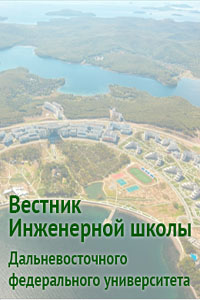Studies of film liquid neutralization of toxic gas emissions generalization
DOI:
https://doi.org/10.24866/2227-6858/2022-4/69-74Keywords:
gas emissions, liquid neutralization, film, liquid, absorption, experimental stand, carbon dioxide, concentration reduction, generalization, criteriaAbstract
In the process of cleaning polluted gas emissions, a film flow of liquid along vertical plates is organized. When they move between the plates, the liquid film as an absorbent intensively absorbs gaseous and solid pollutants. The objective of this work is an experimental study and criterion generalization of the intensity of carbon dioxide absorption into a liquid film at different flow rates, air velocities, and gas concentrations. Analysis of the experimental results showed that the optimal air velocity is 0.8–1 m/s, the optimal irrigation value is (3.3–3.8)*10-4 m2/s. In this case, the concentration of carbon dioxide can be reduced by 30–45% at a contact length of 0.8–1 m. The generalization of the results obtained in a wide range of changes in gas concentrations, liquid flow rates, and the rate of movement of polluted gas is made in the form of a relationship between the Nusselt and Peclet diffusion criteria. This dependence makes it possible to calculate the overall characteristics of liquid film mass transfer apparatuses. In further work, studies will be carried out on the absorption of carbon and nitrogen oxides, as well as sulfur dioxide, into the liquid film.
Downloads
Published
Issue
Section
License
Copyright (c) 2022 Far Eastern Federal Univercity: School of Engineering Bulletin

This work is licensed under a Creative Commons Attribution 4.0 International License.

